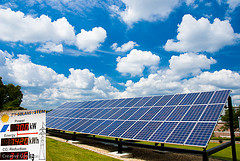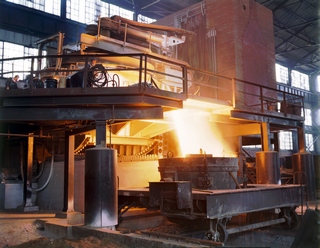The 2015 Race for Renewable Energy

Countries around the world are adding more capacity for renewable energy at an incredible rate. It is a race to see who can lower their dependence on fossil fuels, coal, natural gas, and oil first by implementing solar, wind, and other renewable energy sources. Some of the leaders around the world include East Africa and Denmark. 2013 was the turning point and 2015 is seeing another major shift towards renewable energy.
Renewable Energy Is Accelerating Growth
In 2013, analysts at the Bloomberg New Energy Finance (BNEF) annual summit reported that 143 gigawatts of renewable energy capacity was added to the world. At the same time, 141 gigawatts of energy capacity was added by plants that burn fossil fuel. That was the first time in history that more renewable energy was added to the world than energy from fossil fuels, coal, natural gas, and oil.
Michael Liebreich from the BNEF said, “The electricity system is shifting to clean. Despite the change in oil and gas prices there is going to be a substantial buildout of renewable energy that is likely to be an order of magnitude larger than the buildout of coal and gas.” By 2030, four times as much renewable energy capacity is projected.
Why the Shift Towards Renewable Energy?
People are more conscious of their energy use than ever before, but that’s not the reason countries are focusing on adding renewable energy capacity. The shift is happening because it is now less expensive to implement renewable energy than energy from traditional, non-renewable sources. Solar panels currently make up only one percent of the world’s energy, but the International Energy Agency predicts that solar will take over by 2050. Of course, countries will have to increase their investment in solar for growth to continue.
Leaders in the Renewable Energy Race
Denmark is one of the leaders in the renewable energy race. 39.1 percent of their energy capacity comes from renewable sources. Wind production leads the way and Denmark has the goal to generate 50 percent of their energy from wind turbines by 2020. Germany generates 26 percent of their power from clean energy sources, too.
The U.K. is also picking up their pace in the renewable energy race. In 2014, the country increased their wind power capacity by 13 percent. The U.K. now generate 9.3 percent of their electricity from wind farms. That’s enough to support 6.7 million households through wind energy sources.
Across the world, Kenya, Ethiopia, and Rwanda are also making large investments in renewable energy. However, they are embracing solar and geothermal energy more than wind. Their location in the tropics gives them high hopes for solar energy capacity. China is taking a similar path.
The shift towards renewable energy is good news for the world and future generations. As more countries start to see the need for cleaner energy, the race will get more competitive, and the price of solar panels and wind turbines will continue to fall. Cleaner energy will be less expensive, and more importantly, more sustainable.








